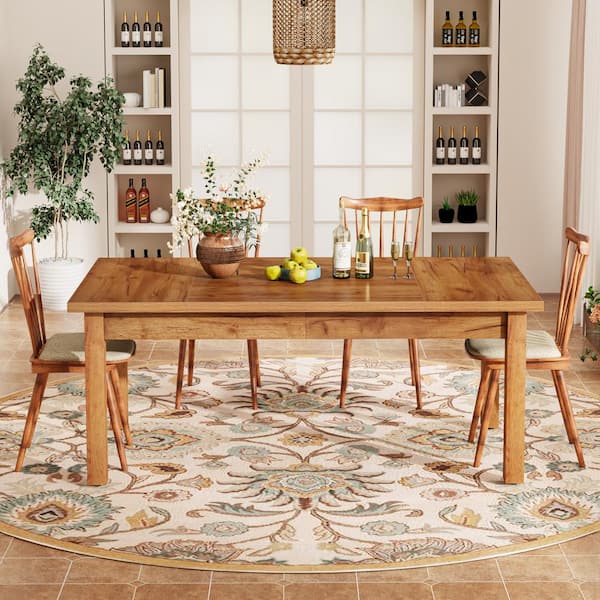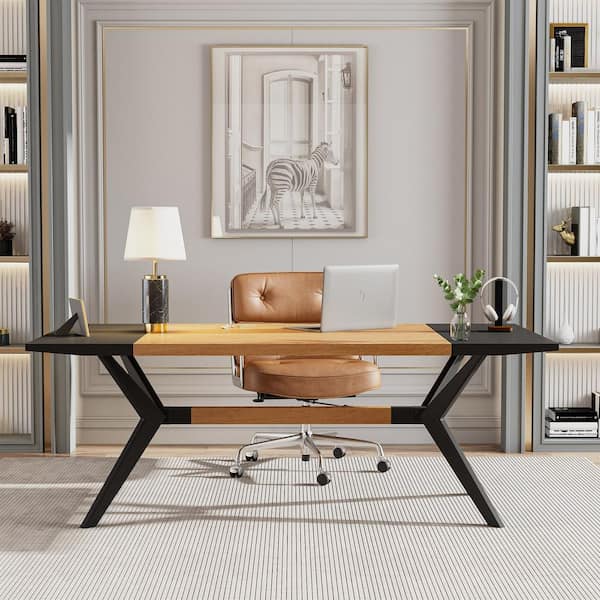The Ultimate Guide to Choose Long Lasting Dining Room Table Legs
The Ultimate Guide to Choose Long Lasting Dining Room Table Legs
Blog Article
Choosing the Perfect Table: What Styles Work Best for Your Home?
Choosing the ideal table for your home can be a nuanced procedure that balances aesthetics and functionality. Whether your room leans in the direction of standard style, modern-day minimalism, rustic beauty, or industrial posh, the selection of styles readily available can provide to diverse preferences. Each design supplies one-of-a-kind advantages and difficulties that can either enhance or disrupt your eating area's harmony. Understanding how various products, shapes, and sizes connect with your existing decor is vital. To navigate these choices properly and discover a table that genuinely enhances your home, take into consideration the complying with aspects in detail.
Analyzing Your Space
Reviewing the measurements and design of your eating area is a vital very first step in choosing the excellent dining table. Begin by measuring the size and size of the area, accounting for doorways, home windows, and various other architectural attributes that might affect table positioning. This guarantees that your table not only fits yet additionally enables comfortable movement around it.
Take into consideration the number of individuals you typically amuse. A table must accommodate your house's daily requirements while providing sufficient flexibility for periodic guests. Generally of thumb, allot a minimum of 24 inches of table width each to make certain a comfy dining experience.
It's additionally necessary to maintain appropriate clearance around the table. Ideally, there ought to go to the very least 36 inches in between the table edge and wall surfaces or various other furniture, allowing easy accessibility and movement. For rooms where chairs with arms or additional storage space devices like buffets are involved, enhancing this clearance to 48 inches is a good idea.
Lights and environment play substantial roles. Ensure that your eating table straightens with existing illumination components or prepare for sufficient illumination remedies. This thorough spatial analysis guarantees that your table not just fits literally however additionally integrates with your room's overall functionality and visual.
Popular Table Styles

Typical dining tables commonly feature ornate details, curved legs, and abundant wood finishes, stimulating a feeling of classic style. They are best for homes with timeless style or those looking to add a touch of refinement to their dining area.
Modern eating tables focus on simplicity and tidy lines, typically integrating products like glass and metal. These tables are ideal for contemporary spaces, providing a streamlined and clean appearance that complements minimalist design philosophies.
Rustic eating tables, on the other hand, emphasize natural materials and a handcrafted appearance - dining room table legs. They often include recovered wood and a troubled finish, producing a cozy and welcoming environment. These tables work well in farmhouse-style homes or those looking for a comfy, natural feeling
Industrial dining tables integrate resources such as steel and wood, usually showcasing a practical aesthetic. This style is fit for loft spaces or metropolitan spaces, adding a touch of sturdy appeal and toughness to the dining experience.
Each style provides unique advantages, making it vital to select one that aligns with your home's total layout and your individual preferences.
Material Options
When choosing an eating table, the choice of product plays a vital role in identifying both the table's aesthetic appeals and capability. Wood, steel, glass, and composite products each deal special benefits and obstacles, making it imperative to straighten the product with your home's decor and way of living requirements.
Timber is an ageless and functional choice, offered in varieties such as oak, walnut, and mahogany. Recognized for its resilience and the original source heat, wood complements both conventional and contemporary insides. Nonetheless, it requires regular maintenance to stop scrapes and bending.
Metal tables, usually crafted from stainless-steel, light weight aluminum, or wrought iron, are commended for their modern-day charm and effectiveness. They are particularly matched for industrial or minimal setups but can be susceptible to damages and may really feel cold to the touch.
Glass eating tables bring an air of elegance and visibility, perfect for smaller rooms as they develop an illusion of more area. While easy to tidy, glass can be susceptible to spots and requires cautious handling to stay clear of chips and splits.
Composite materials, such as MDF and plywood, offer economical and customizable services, though they might lack the long life of all-natural materials. Choosing the right material ensures your eating table is both a functional asset and a visual joy.
Forming and Dimension Factors To Consider
After figuring out the ideal material for your eating table, the next consideration is selecting the appropriate form and size to match your room. Conversely, round tables cultivate a feeling of intimacy and are excellent for smaller eating areas, motivating discussion by removing edges and making everyone feel just as included.
Dimension is equally crucial and need to be dictated by both the space's dimensions and the variety of individuals you plan to seat routinely. Generally of thumb, assign at least 24 inches of table width per individual to make sure comfy dining. Furthermore, take into consideration the table's clearance area: there ought to be at least 36 inches in between the table edge and the walls or various other furnishings. This guarantees that restaurants can move easily without feeling cramped. Expanding tables offer versatility if you regularly organize bigger celebrations, providing added seats when required without occupying extra room daily. Picking the best form and size makes sure both usefulness and aesthetic consistency in your eating area.
Matching Your Decor
Selecting a dining table that balances with your existing design is essential in get redirected here creating a natural and welcoming area. A smooth, minimalist table with tidy lines is optimal for a contemporary home, while a vintage, ornate table fits a more standard setting.
If your decoration includes cozy tones and all-natural products, think about a wood table to boost the organic feel. On the other hand, a glass or steel table might be extra proper in a room controlled by amazing colors and industrial aspects.
Structure plays a critical duty. A rough-hewn, reclaimed wood table can include personality to Continued a rustic space, while a polished marble surface area can elevate an extravagant eating location. Take into consideration the range and proportion of the table in relation to the area dimension and existing furnishings. A well-matched eating table not only boosts visual charm but additionally enriches the total dining experience.

Conclusion
Selecting the excellent eating table requires careful consideration of room, design, products, shape, and dimension. Conventional tables enhance timeless interiors with rich wood surfaces, while modern tables match contemporary settings via glass and metal.
Report this page